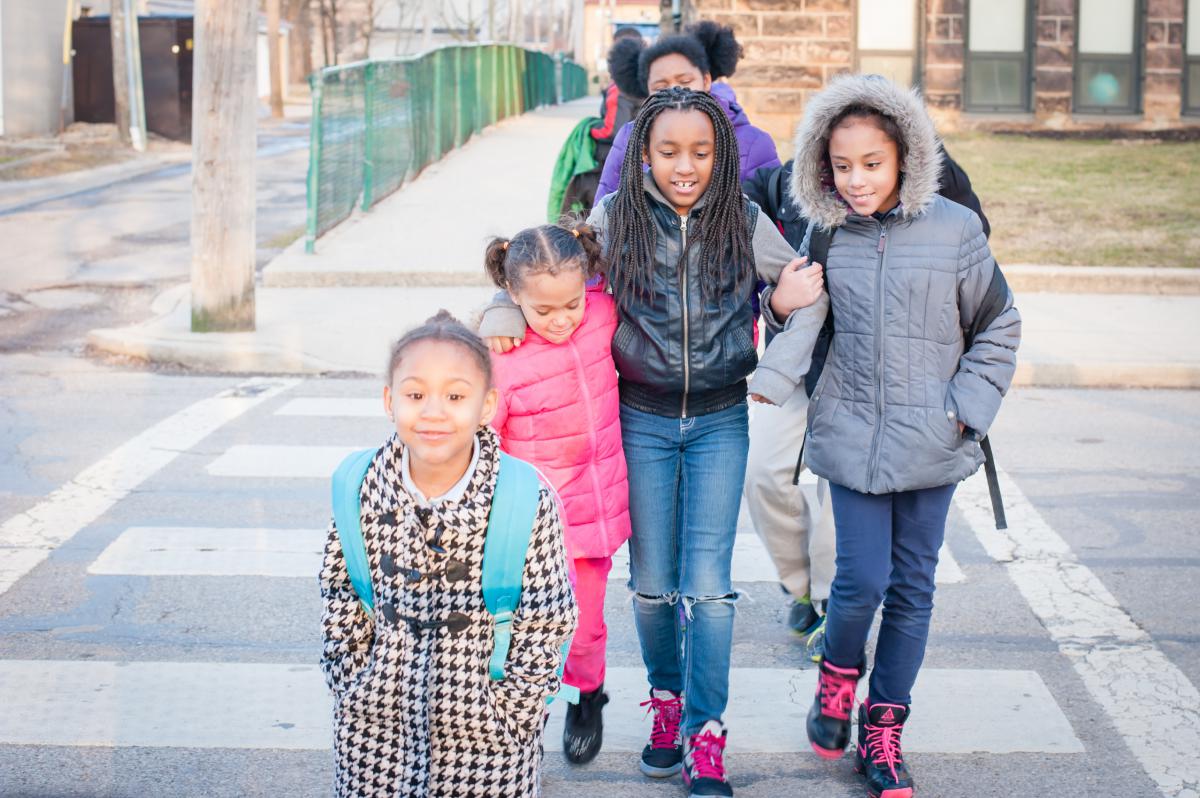The Alliance for Biking and Walking recently released its 2016 Benchmarking Report, a biennial update on walking and biking across the United States intended to promote access to data, measure progress, support policy and advocacy efforts, and connect to health initiatives. More than half of member organizations in the Alliance for Biking and Walking are involved in Safe Routes to School efforts.
 The 2016 Benchmarking Report identifies Safe Routes to School as one of the
The 2016 Benchmarking Report identifies Safe Routes to School as one of the
key “input” benchmarks shown to influence walking, bicycling, health, and safety.
The report covers all states and the 50 most populous cities. The report synthesizes national datasets with results from a survey completed by transportation, planning, and advocacy representatives at state and city levels in late 2014 to early 2015.
For active transportation advocates, the full document is a must-read, but we’ll summarize the highlights most pertinent to Safe Routes to School.
For overall walking and biking trends, student active commutes have seen steady growth, from 11.9% to school and 15.4% walking home in 2007 to 15.2% to school and 18.4% walking home in 2013, and a slow rise to 2.2% biking to school from 2009 to 2013. However, there has been some mode shift from school bus to private vehicles.
Overall, youth make up 21% of the population but take 17% of walking trips and 39% of biking trips. Pedestrians and bicyclists, especially vulnerable road users like youth, seniors, and people with disabilities, experience increased injury and fatality in a crash compared with those in motor vehicles, calling for effective protective road policies. State safety statistics for biking and walking are listed, and the report also identifies states that have a statewide Safe Routes to School curriculum and cities with bicycle education for youth.
The report also identifies Safe Routes to School programming as one of the key “input” benchmarks shown to influence walking, bicycling, health, and safety. The report highlights benefits of Safe Routes to School programming, including an 18% relative increase in active transportation to school documented in DC, Florida, Oregon and Texas following engineering improvements and lower child pedestrian injuries in areas of New York City with Safe Routes to School environmental interventions compared to those without. As a result, the report advocates for continued dedicated funding, especially at the state level. The report includes tables comparing the percentage of federal funds dedicated to Safe Routes to School in each state from 2009-2014 as well as state funding sources that support biking and walking projects.
The report, available for free here, includes summary worksheets that can help you quickly compare your state or city to national averages across mode share, health, safety, and funding indicators. Capitalize on this timely opportunity to highlight your data and “make your case” for Safe Routes to School!

